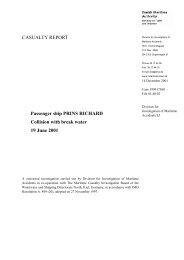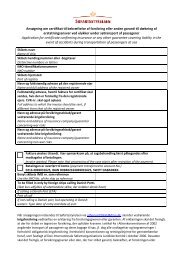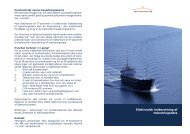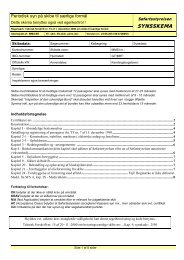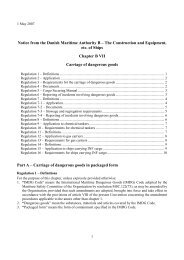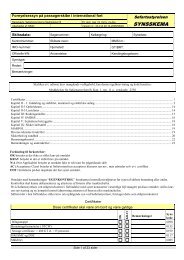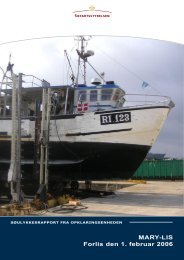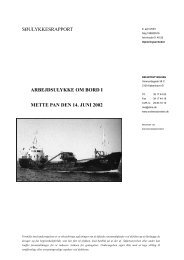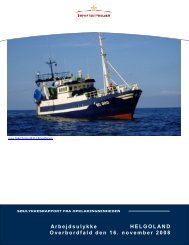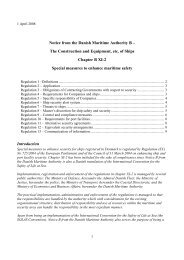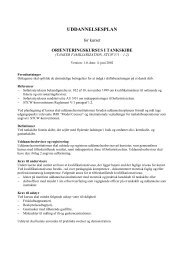kvartalsvis orientering 1 2009 - Søfartsstyrelsen
kvartalsvis orientering 1 2009 - Søfartsstyrelsen
kvartalsvis orientering 1 2009 - Søfartsstyrelsen
You also want an ePaper? Increase the reach of your titles
YUMPU automatically turns print PDFs into web optimized ePapers that Google loves.
Kvartalsvis Orientering 1/<strong>2009</strong>Quaterly Information 1/<strong>2009</strong>Analysis and conclusionMIRABELL grounded approximately 15 minutes after departure. The master was aloneon the bridge, because the chief officer, the 2 nd officer and the three ABs were on deckfor the mooring operations. The chief officer came on the bridge shortly before thegrounding.The master was not familiar with the navigation in the area, it was dark and it was anarrow area with a dept of water at places, which was close to the draught of the vessel.He was manoeuvring the ship, he was helmsman, he was navigating in the leadinglights and using the search light to see the dark buoys, which marked the boundaries ofthe fairway.According to the AIS plot MIRABELLE started the turn to starboard approximately300m before the planned turning position. The master can not explain why this happened.He was well rested, and he felt fully confident with the navigation. He did notnotice the early turn on the chart plotter, presumably because he did not watch it.The fact that the master was alone on the bridge and should handle the manoeuvring,the navigation, the look-out and the handling of the search light is the main cause ofthe grounding. He did not notice the starboard turn, before it was too late to avoid thegrounding.In the actual situation, with a full loaded ship in an area with narrow and shallow fairwayswith depth of water nearly the same as the draught of the vessel and in waterwith which the master was not familiar, it would have been an ordinary practice of seamento make use of a local pilot.RecommendationsThe master of MIRABELLE is recommended,to update the ships SMS procedures on watch-keeping to secure that the master isassisted on the bridge during arrivals and departures,to use a pilot in situations like the actual one, where the fully loaded ship shall navigatein a narrow area with shallow water, with which the master is not familiar.22 January <strong>2009</strong>The Division for Investigation of Maritime Accidents21



